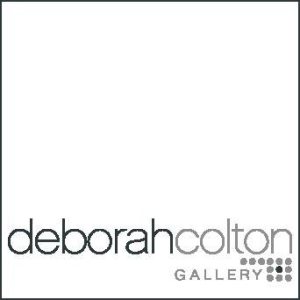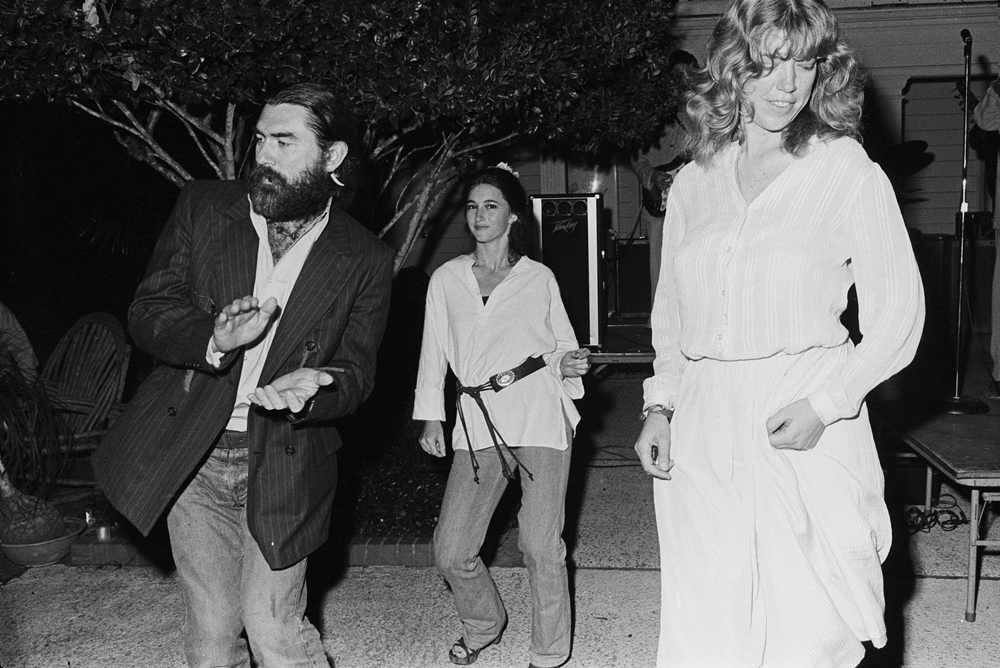Often has been the case, while working with this archive, that I have found myself investigating the life and art of deceased artists. Of course, that’s true of Suzanne Paul herself. These days, however, I seem to find myself more and more often reaching out to artists still living.
Recently I sat down with Houston artist Susan Plum, who was a close personal friend of Suzanne Paul’s, to dig up some info on some very timely images I’ve come across while scanning.

These images, though taken in 1983, speak to me of the present and seem to reflect the political climate we’re experiencing so close to home these days. I detect in the images an inherent, almost natural, irreverence and rebelliousness — the markers of youth and artistry that demonstrate an uninhibited reaction to one’s place in time. Quite obviously, we see an artist throwing tortillas at an American flag. There’s much that can be made by way of commentary here… but take from it what you will.
A gap in an exhibition left opportunity for an impromptu installation and Plum was up for the challenge. “It was a statement about America,” she says, and it’s still relevant — it still fits. Susan got a good laugh at looking the photos. “I don’t remember it being that, THAT much fun…”
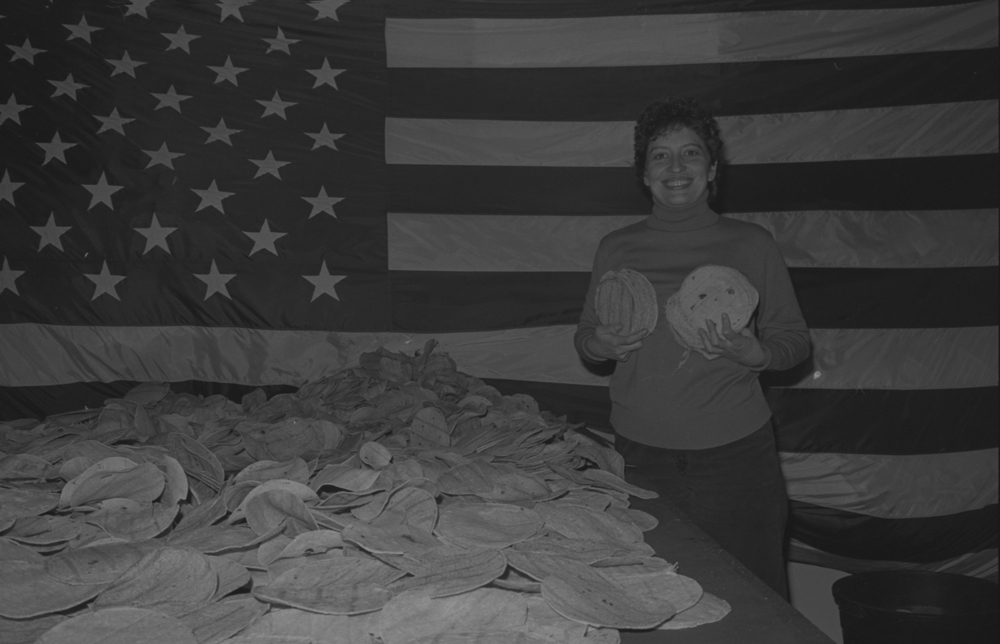
These documentary photos show some behind-the-scenes action related to a dual-venue presentation, which together created Low Down Showdown. The group pop-up exhibition invited an active group of Houston artists to present their works at The Alternative Museum in Tribeca (Showdown) as well as in a less-pristine venue across the street from the museum (Low Down). In the high-end / low-end juxtaposition, curation for the project was a collaborative effort between Houston’s Anne Harithas and the Alternative Museum’s co-founder Geno Rodriguez. At the time Susan was not living in Houston, but was posted in Seattle and met the Houston pack in New York City for the pop-up.
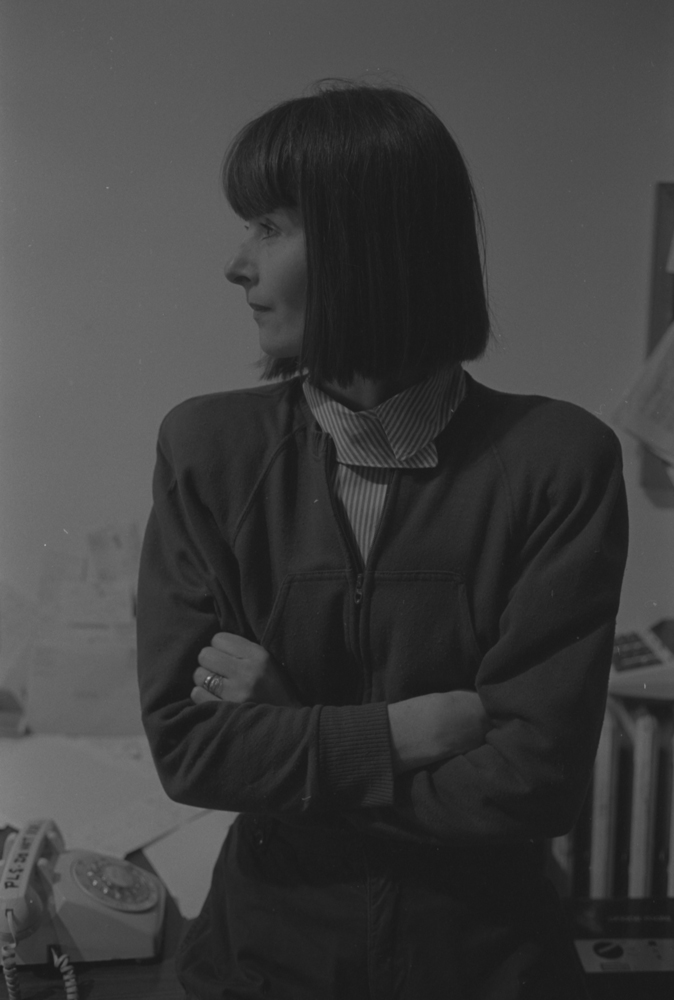
Art critic Kay Larsen mentioned Showdown in his New York Magazine editorial “Uncommon Visions”, and his text is invaluable as far as research goes. From his writing we gather the following:
‘Showdown’ was “a five-part series focusing on artists from the Southwest, sponsored by the Alternative Museum in TriBeCa… [executed with] the best of intentions… to give a glimpse of artists from parts of the country little known in New York. [The show] sprawls all over the Texas map, at least in this first version, curated by Anne Harithas, a former Houston gallery director and artists’ advocate. The apocalyptic tone of the title is matched by the size of the show’s ambitions: It will have five curators and three locations in four months. Harithas’s section closed on May 7…
The showdown, presumably, is with New York. As musical anthem to the show, California artist Terry Allen provided a twanging cowboy lament — played throughout the galleries — about a truckload of art sent out from the big city ‘to chide, cajole, humble and humiliate the Golden Bear.’ The truck overturns, catches fire, ‘and what the critics have cheered is now shattered and queered and their noble reviews have been stewed on the road.’ …
Rowdiness is a basic condition in this show. It turns up in John Alexander and Bert Long’s outrageous video satire on the Ku Klux Klan, whose members are shown gleefully sticking knives in watermelons and chewing on the pieces. It turns up again in Mel Casas’s banner of bullshit (literally, a painting of a bull’s head and a pile of turds). After such sophisticated bombast, I was drawn to the understated poetry of Nancy O’Connor’s photo-murals, which allow black cowboys to tell the story of their lives as outsiders caught up in a great myth. And I was especially taken with the ambivalent exuberance in paintings by Robert Wade… [in which he] has taken an old trove of Texas photographs, enlarged them, and transferred the images onto sensitized linen. The result is a true photo-realism in which cowgirls at a rodeo, or rattlesnake hunters with blank eyes and big guns, become archetypes of wilderness.”
The forthcoming sections of Showdown will include a number of artists who’ve become practically synonymous with a southwestern viewpoint — Luis Jiminez, James Surls —as well as others less familiar but equally caught up in the mythology of desert and mountain… ‘Showdown’ is as unruly as such exhibitions out to be.”
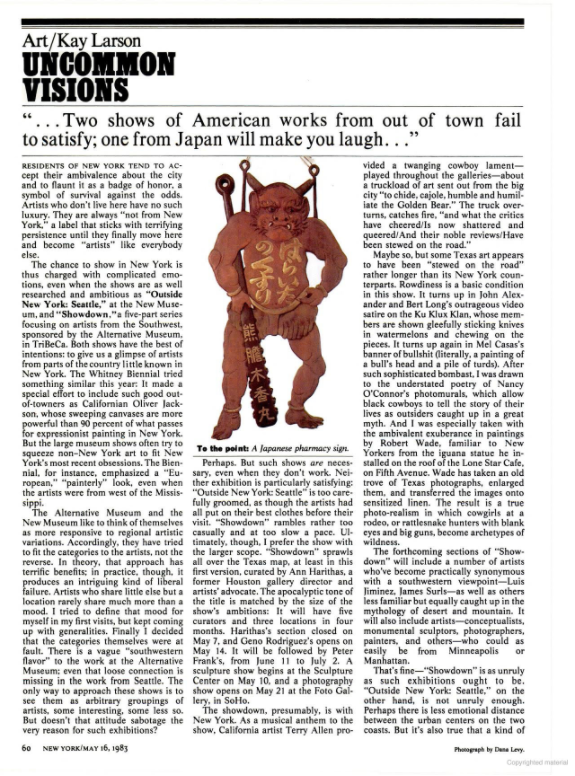
For Low Down Bert Long traveled to NYC with several suitcases of freshly made flour and corn tortillas to complete an installation. They started to foster mold about a week after the show opened. Suzanne and Susan decided to repurpose the decaying tortillas and feed the ducks at the Hudson River, which may have been illegal at the time.

As it goes, the museum’s co-director Geno Rodriguez was in jail the night before the show opened. There’s a good story there, I’m told. Artist Frank Fajardo had an installation in the pop-up and Clifton Chanier, a beloved Houston musician, played at the exhibition’s opening party in the basement of the space, where Tacy Tajun also executed a mural of cowboy silhouettes.
“We all were pretty comfortable around each other,’ Susan noted during our conversation. “It was the era,” she says…. “I think there was a connectedness that was lost when so many artists later moved [to Houston].. you could really almost count [everyone] on two hands, maybe four hands…”
Susan Plum lived in Houston from 1975 – 1980 and Suzanne was among the first that she met here — a next door neighbor. They bonded over time spent in California and art-making, among other shared interests, and developed a close friendship. When asked about the experience of being photographed by Suzanne, Susan paused and said “I didn’t even notice.. it was just something she was doing all the time.”
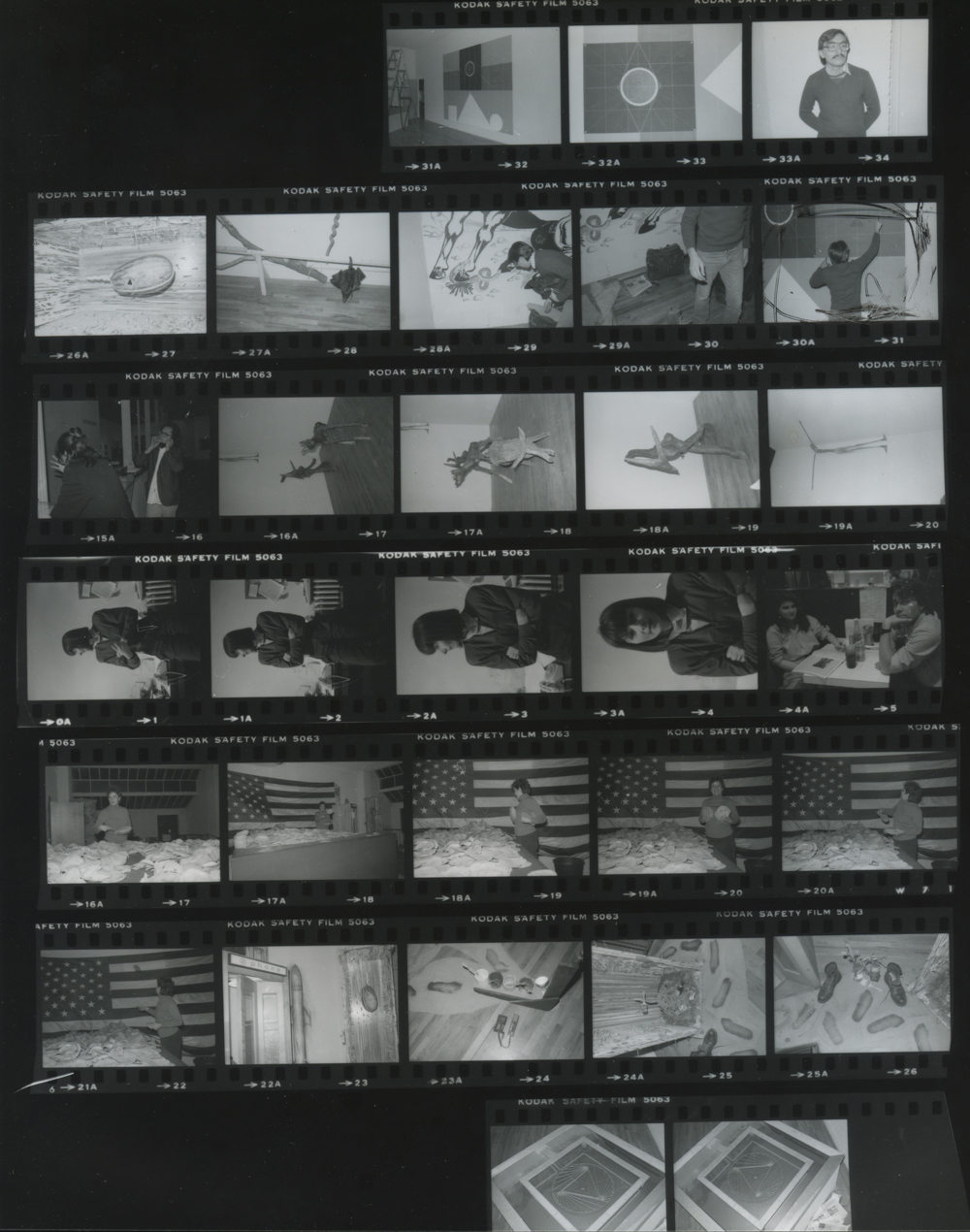
Susan got a kick out of seeing these images, which reinforces to me that our next phase, which focuses on identifying more characters in the photographs (as we are nearing the end of the digitizing phase), will be lively learning and so much fun, hopefully for everyone involved.
Fun times aside, this group of images reinforces an inquiry into themes that have come up time and again during this project. For example:
- The inclusion of live music and perfomance as a decided intent of the immersive art experiences that Jim and Anne Harithas created, curated, and directed.
- Aspects that supported the super close social and collaborative connections between artists living in Houston at the time.
Susan believes firmly that a well-established library system should be the guardians of Suzanne’s collection, and that such a close friend of Suzanne’s is supportive of our teams’ approach is meaningful to me and an yet another indicator that we are on the right track.
—–
***
Content originally published by Theresa Escobedo, here, on 2.25.17
